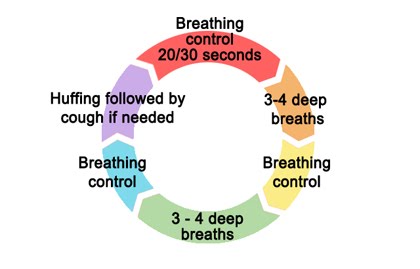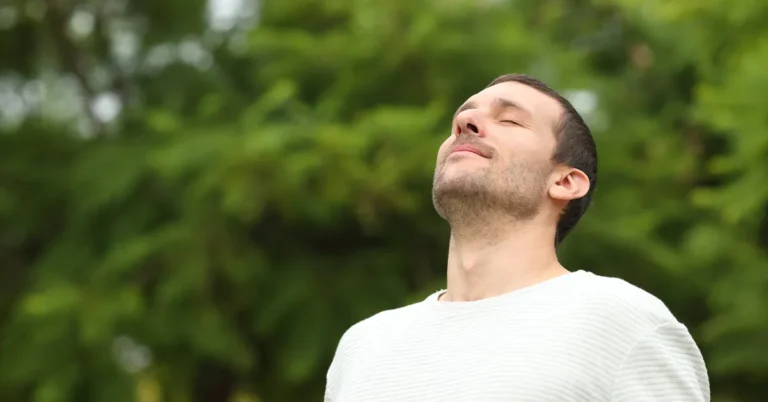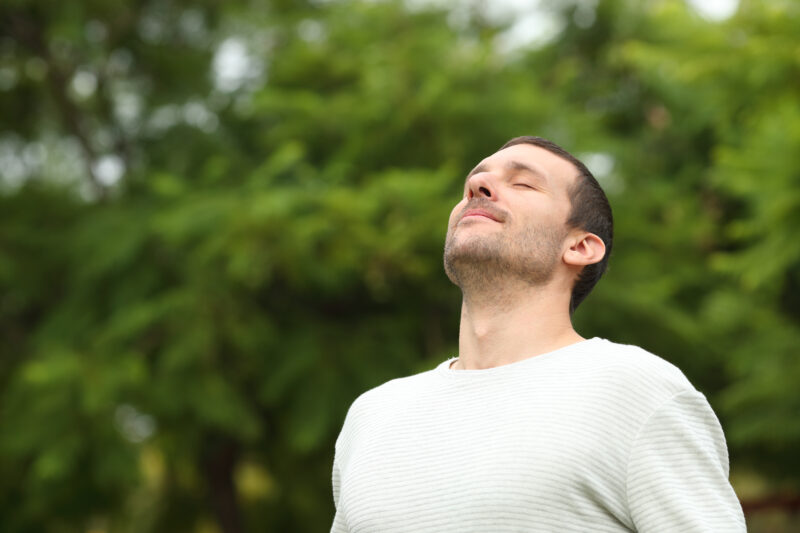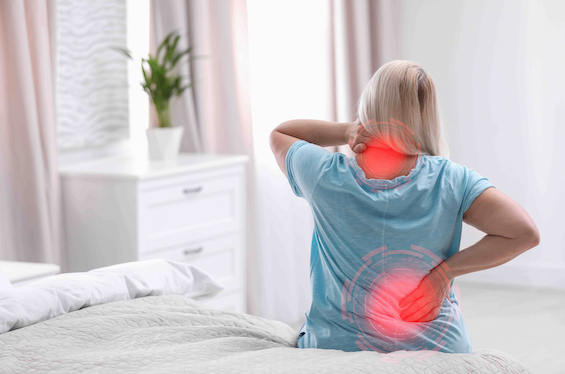The active cycle of breathing technique uses deep breaths and relaxed breathing to push phlegm from the small airways at the bases of your lungs to larger airways at the top. They can then be cleared more easily through huffing and coughing techniques.
Body position is important before you begin your technique, as this will open up your chest and facilitate better airflow. It may also be important to cough up the phlegm into a pot so it can be analysed later if necessary.
The technique can be modified depending on your condition. A respiratory physiotherapist at Physis Physiotherapy, will be able to advise you on the technique you should use for the removal of your secretions. A basic outline of the process is presented below.
Stages of Active Cycle Breathing
Active cycle breathing technique consists of 4 stages but the amount of breaths, deep breaths and huffs is not exact:
1. Breathing control. This is gentle breathing to allow you to relax and concentrate. With your hands gently resting on your tummy, concentrate on feeling your tummy rise and fall with each gentle breath in and out. Your breath out should be slow, like letting go of the air gently.
2. Thoracic expansion (deep breaths) – This gets the air right down to the bottom of the lungs where it can loosen the phlegm. The breath in through your nose should be nice and slow, you should be able to feel the stomach moving first then your lungs filling up, when you feel like you have as much air in as is possible, hold it there just for a few seconds, then gently breathe out through your mouth.
3. Forced expiration (huff or Forced Expiratory Technique (FET)) – This helps force the phlegm up and out of your lungs. To carry out the technique effectively you need to pretend you have a mirror in front of you. Take a normal breath in then huff the air out as if you are steaming up the mirror. This should be long and strong. This sometimes causes an acute onset of coughing, try to hold the cough until you feel it ready to clear the phlegm. You can repeat this a couple of times. If you don’t feel there are any secretions ready to cough up, just restart the cycle again.
4. Cough – This allows you to get the phlegm up and out of your mouth. Coughs may be tiring, so should only be used when you feel like the phlegm is just in the back of your throat. If the technique is used following surgery then a towel or your hands can be held over the scar site to ease the pressure on the wound and reduce pain whilst coughing.

What are the benefits of the active cycle breathing technique?
Removing secretions will help reduce the risk of chest infection. Active cycle breathing technique is a very simple and effective technique. It is beneficial for a number of reasons:
- The technique can be carried out whether you are lying in bed or sitting up in your chair watching television
- Thoracic expansion component will allow you to improve your lung volume and
therefore function in the long term - The exercise does not require any specialist equipment
- Can be modified easily to be used by most patients
Who would benefit from active cycle of breathing technique?
Any person needing to ensure the normal movement of phlegm in their lungs will benefit from active cycle breathing
techniques.
These include:
- Following surgery – the anaesthetic will have depressed respiratory system making you more prone to chest infections
- People with chronic lung disease looking to prevent infection or mange their condition
- People with an acute chest condition
Here is a video on how to do active cycle breathing. Click on this link for more information.
Find out more about our Respiratory physiotherapy.
If you have any questions or queries, please get in touch.
If you think you would benefit from some treatment to improve your breathing, give us a call on 0131 478 4646, or book on-line.



